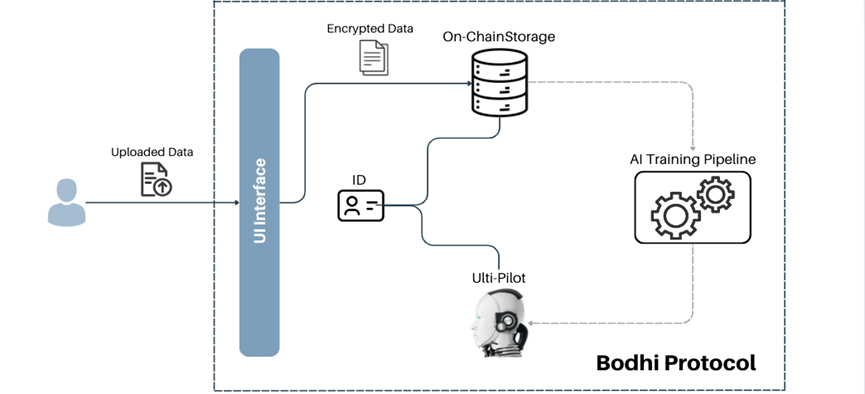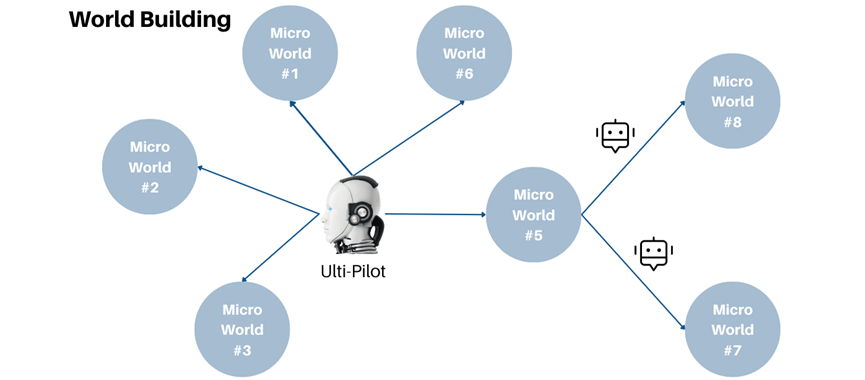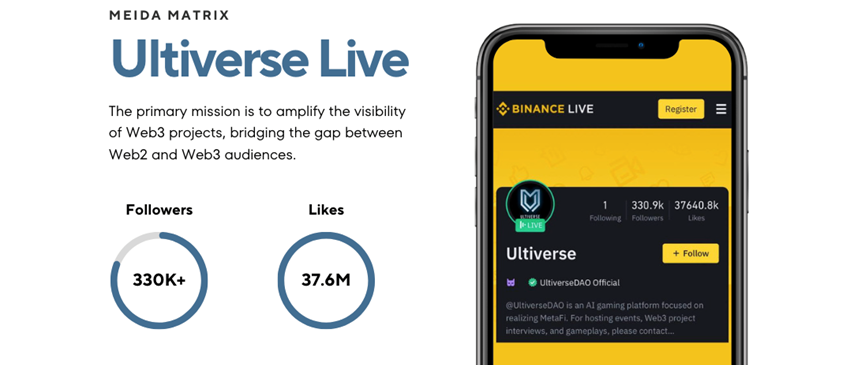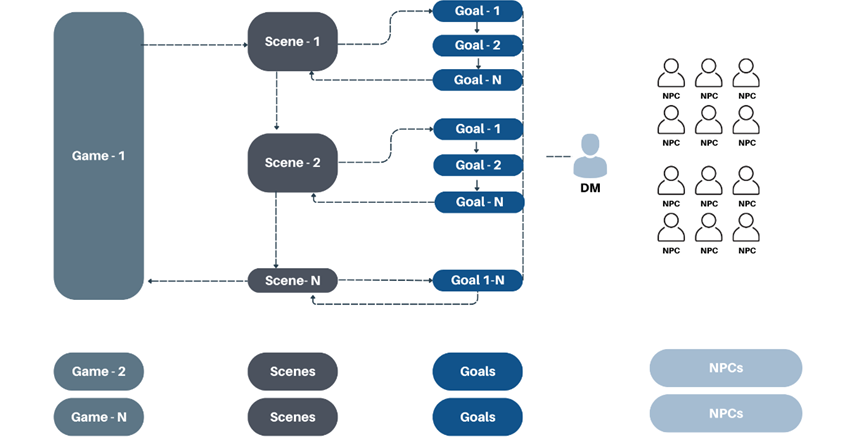Driven by AI, analyze the four product levels of Web3 Game platform UltiverseDAO
The biggest problem with GameFi in the past was that the vast majority of people just played games simply to make money, and the project side was unable to effectively introduce more externalities to support the operation of the game. In the end, it could only choose to mess it up or directly RUG. Today, the industry is moving towards creating a more immersive and engaging experience. It is no longer just about chaining in-game assets, but moving the entire game onto the chain through technologies such as sub-chaining and sub-network distribution, and bringing more Focus on building a truly "fun" hit.
Among the GameFi projects in this bull market, Ultiverse is definitely one of the most anticipated projects this year. Inspired by the immersive worlds of movies like Ready Player One, Liberty City, and Westworld, Ultiverse seeks to create not just a game, but a comprehensive digital community. By introducing new technologies such as NFT, DeFi and the Metaverse, Ultiverse is not just trying to create a game, but a comprehensive digital community. In addition to the immersive world in the movie, Ultiverse also plans to allow users to truly participate in the construction and development of the community through community governance and decentralization. This will be a project with potential.
The rise of UltiverseDAO must have a unique growth path. Therefore, this series of articles will gradually analyze from the protocol layer to the application layer, and delve into the product strategy of this Web3 game platform.
Powered by AI, Ultiverse’s four product tiers

Ultiverse is a platform that combines AI and blockchain technology to provide a Web3 gaming ecosystem immersive gaming experience in the game, building a metaverse where users can play, create and connect. The core of Ultiverse builds an AI-driven ecosystem that is divided into four different layers, each of which plays a key role in the overall functionality and user experience.
1. Protocol Layer - Bodhi Protocol
Bodhi Protocol is a framework that combines Web3 assets with GenAI artificial intelligence as the foundation of the Ultiverse ecosystem. It enhances the gaming ecosystem by leveraging large-scale language models and precisely customized decentralized models. The Bodhi protocol can generate diverse content tailored for the game world, allowing players to enjoy a more interesting and exciting gaming experience.
2. Infrastructure layer – Infra
Ultiverse Live: As a dynamic media department, it provides a comprehensive media platform customized for Web3 projects.
Mission Runner: A mission platform where users can take on daily tasks and receive generous rewards.
World Book Creator: Provides AI-driven tools to help game developers create immersive worlds and scenes.
Marketplace: Provides trading space for assets within the platform.
Visual DID Creator: An AI-based tool that allows users to create and customize using various PFP style NFT templates.
3. Asset layer – Assets
Includes three core assets: Electric Sheep, World Fragment, and MetaGF. These assets provide players with unique functions and Incentivize and enhance player stickiness.
4. Application layer – Dapps
Includes all decentralized applications launched within the Ultiverse ecosystem, such as GameFi, DeFi and SocialFi applications such as Terminus.
In this article we will first focus on the first two layers of Ultiverse: the protocol layer and the infrastructure layer.
The underlying driver of Ultiverse - Bodhi Protocol
Bodhi is an innovative protocol that merges Web3 assets with GenAI to promote the development of the game ecosystem. It provides two main functions:

Ulti-Pilot: The Bodhi protocol allows developers AINPC to customize it, which is essential for any game integrated into the Ultiverse. It's important. At the same time, players can also create their own Ulti-Pilot as their ‘identity’ in Ultiverse. By interacting with the ecosystem or smart contract, this data will be encrypted and stored on the chain, associated with the player's DID, and become an exclusive digital asset for future exchange or monetization.

Creation of microworlds: Game developers in the Ultiverse ecosystem can leverage the Bodhi protocol to create their own AI-driven microworlds, which are connected to each other through specific AI NPCs, Serves as a node that links to the larger world of Ultiverse. Each microworld is an independent game. The Bodhi protocol solves the problem of how to connect these microworlds in a generative AI way.
Ulti-Pilot not only serves gamers, but also serves each microworld itself. A player's DID is an agent that transfers information between different microworlds, including roles, abilities, histories, and relationships. At the same time, game studios can also build official agents to communicate with other microworlds and exchange information to better serve players. Ulti-Pilot acts as a bridge between players and the microworld in the Bodhi protocol, promoting the flow of information and enhancing the interactive experience.

Infrastructure layer – Infrastructure
As the cornerstone of Ultiverse, its infrastructure is crucial to improving the overall experience of users and developers, supporting the efficiency of Ultiverse Operate and ensure scalability, allowing Ultiverse to effectively reach and engage a wider audience.
Ultiverse SDK
In order to solve the challenges of transitioning traditional game projects to a Web3 environment, Ultiverse has developed a sophisticated multi-platform software development kit (SDK) that simplifies the integration process for developers. And provides players with a seamless Web3 application and game participation experience. This comprehensive SDK serves as a strategic entrance for developers, helping developers quickly integrate key functions including built-in MPC and AA wallets, rankings, achievements, etc.
Ultiverse Live
As a dynamic media department, UltiverseLive is a comprehensive media platform tailored for Web3 projects. Its main mission is to expand the visibility and breadth of communication of Web3 projects. Bridging the gap between Web2 and Web3 audiences. As a centralized information hub, Ultiverse Live provides users with a quick path to easy access to various project details and updates.

Mission Runner
Mission Runner is a mission platform within the Ultiverse ecosystem that attracts user participation by providing rewards for completing various missions. It utilizes the Bodhi protocol and Ultiverse SDK to integrate with games within the Ultiverse ecosystem to achieve data synchronization between different Dapps.

World Book Creator
Powered by Ultiverse's strategic partner RPGGO.ai, "World Book Creator" provides world book content for game classification. Create tools. The World Book will include storylines, characters, world goals and core conflicts. The entire world will unfold iteratively, and Ulti-Pilot will affect the storyline in real time, allowing players to experience a customized gaming experience in their micro-world.

So far, we have provided you with a technical analysis of Ultiverse, the new capital favorite of the Web3Games track. Ultiverse is based on the Bodhi protocol and uses AI Web3 Game as the main narrative to build an ecosystem full of infinite possibilities for players and chain game developers. Breaking through the shackles of traditional games that can only be run individually, Ultiverse creates a metaverse that collects all its games into the same virtual world. This ambitious enough idea and huge narrative are attracting more and more users and capital to join.
In the next chapter, we will continue to explain Stay Tuned, the top player in the Web3 Games track, from the perspectives of gameplay, assets, token economy and development path.
The above is the detailed content of Driven by AI, analyze the four product levels of Web3 Game platform UltiverseDAO. For more information, please follow other related articles on the PHP Chinese website!

Hot AI Tools

Undresser.AI Undress
AI-powered app for creating realistic nude photos

AI Clothes Remover
Online AI tool for removing clothes from photos.

Undress AI Tool
Undress images for free

Clothoff.io
AI clothes remover

AI Hentai Generator
Generate AI Hentai for free.

Hot Article

Hot Tools

Notepad++7.3.1
Easy-to-use and free code editor

SublimeText3 Chinese version
Chinese version, very easy to use

Zend Studio 13.0.1
Powerful PHP integrated development environment

Dreamweaver CS6
Visual web development tools

SublimeText3 Mac version
God-level code editing software (SublimeText3)

Hot Topics
 1378
1378
 52
52
 How to implement file sorting by debian readdir
Apr 13, 2025 am 09:06 AM
How to implement file sorting by debian readdir
Apr 13, 2025 am 09:06 AM
In Debian systems, the readdir function is used to read directory contents, but the order in which it returns is not predefined. To sort files in a directory, you need to read all files first, and then sort them using the qsort function. The following code demonstrates how to sort directory files using readdir and qsort in Debian system: #include#include#include#include#include//Custom comparison function, used for qsortintcompare(constvoid*a,constvoid*b){returnstrcmp(*(
 How to optimize the performance of debian readdir
Apr 13, 2025 am 08:48 AM
How to optimize the performance of debian readdir
Apr 13, 2025 am 08:48 AM
In Debian systems, readdir system calls are used to read directory contents. If its performance is not good, try the following optimization strategy: Simplify the number of directory files: Split large directories into multiple small directories as much as possible, reducing the number of items processed per readdir call. Enable directory content caching: build a cache mechanism, update the cache regularly or when directory content changes, and reduce frequent calls to readdir. Memory caches (such as Memcached or Redis) or local caches (such as files or databases) can be considered. Adopt efficient data structure: If you implement directory traversal by yourself, select more efficient data structures (such as hash tables instead of linear search) to store and access directory information
 How Debian OpenSSL prevents man-in-the-middle attacks
Apr 13, 2025 am 10:30 AM
How Debian OpenSSL prevents man-in-the-middle attacks
Apr 13, 2025 am 10:30 AM
In Debian systems, OpenSSL is an important library for encryption, decryption and certificate management. To prevent a man-in-the-middle attack (MITM), the following measures can be taken: Use HTTPS: Ensure that all network requests use the HTTPS protocol instead of HTTP. HTTPS uses TLS (Transport Layer Security Protocol) to encrypt communication data to ensure that the data is not stolen or tampered during transmission. Verify server certificate: Manually verify the server certificate on the client to ensure it is trustworthy. The server can be manually verified through the delegate method of URLSession
 How to set the Debian Apache log level
Apr 13, 2025 am 08:33 AM
How to set the Debian Apache log level
Apr 13, 2025 am 08:33 AM
This article describes how to adjust the logging level of the ApacheWeb server in the Debian system. By modifying the configuration file, you can control the verbose level of log information recorded by Apache. Method 1: Modify the main configuration file to locate the configuration file: The configuration file of Apache2.x is usually located in the /etc/apache2/ directory. The file name may be apache2.conf or httpd.conf, depending on your installation method. Edit configuration file: Open configuration file with root permissions using a text editor (such as nano): sudonano/etc/apache2/apache2.conf
 How debian readdir integrates with other tools
Apr 13, 2025 am 09:42 AM
How debian readdir integrates with other tools
Apr 13, 2025 am 09:42 AM
The readdir function in the Debian system is a system call used to read directory contents and is often used in C programming. This article will explain how to integrate readdir with other tools to enhance its functionality. Method 1: Combining C language program and pipeline First, write a C program to call the readdir function and output the result: #include#include#include#includeintmain(intargc,char*argv[]){DIR*dir;structdirent*entry;if(argc!=2){
 How to learn Debian syslog
Apr 13, 2025 am 11:51 AM
How to learn Debian syslog
Apr 13, 2025 am 11:51 AM
This guide will guide you to learn how to use Syslog in Debian systems. Syslog is a key service in Linux systems for logging system and application log messages. It helps administrators monitor and analyze system activity to quickly identify and resolve problems. 1. Basic knowledge of Syslog The core functions of Syslog include: centrally collecting and managing log messages; supporting multiple log output formats and target locations (such as files or networks); providing real-time log viewing and filtering functions. 2. Install and configure Syslog (using Rsyslog) The Debian system uses Rsyslog by default. You can install it with the following command: sudoaptupdatesud
 Debian mail server SSL certificate installation method
Apr 13, 2025 am 11:39 AM
Debian mail server SSL certificate installation method
Apr 13, 2025 am 11:39 AM
The steps to install an SSL certificate on the Debian mail server are as follows: 1. Install the OpenSSL toolkit First, make sure that the OpenSSL toolkit is already installed on your system. If not installed, you can use the following command to install: sudoapt-getupdatesudoapt-getinstallopenssl2. Generate private key and certificate request Next, use OpenSSL to generate a 2048-bit RSA private key and a certificate request (CSR): openss
 Debian mail server firewall configuration tips
Apr 13, 2025 am 11:42 AM
Debian mail server firewall configuration tips
Apr 13, 2025 am 11:42 AM
Configuring a Debian mail server's firewall is an important step in ensuring server security. The following are several commonly used firewall configuration methods, including the use of iptables and firewalld. Use iptables to configure firewall to install iptables (if not already installed): sudoapt-getupdatesudoapt-getinstalliptablesView current iptables rules: sudoiptables-L configuration



